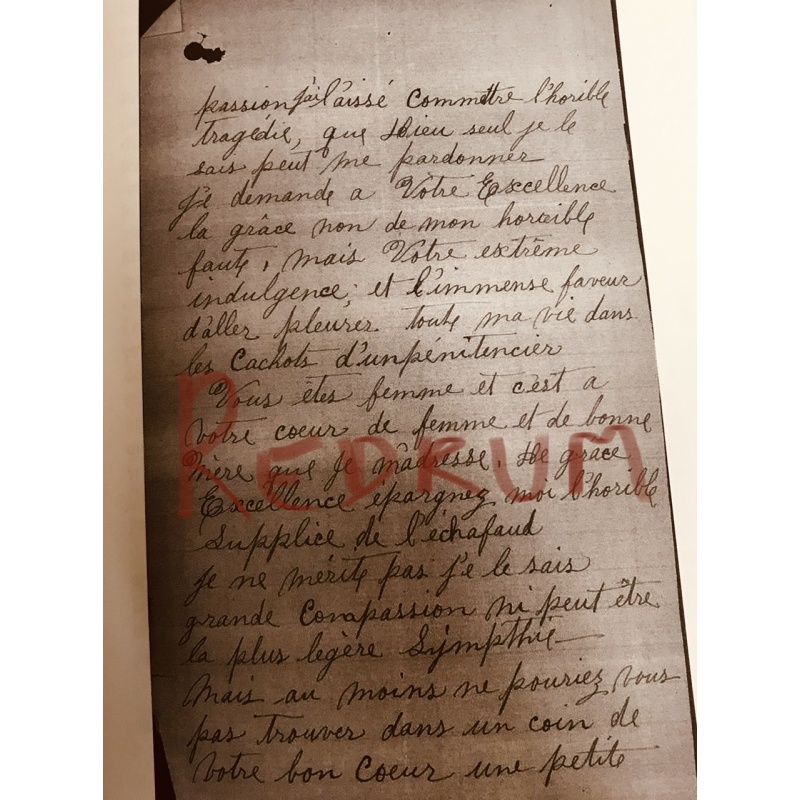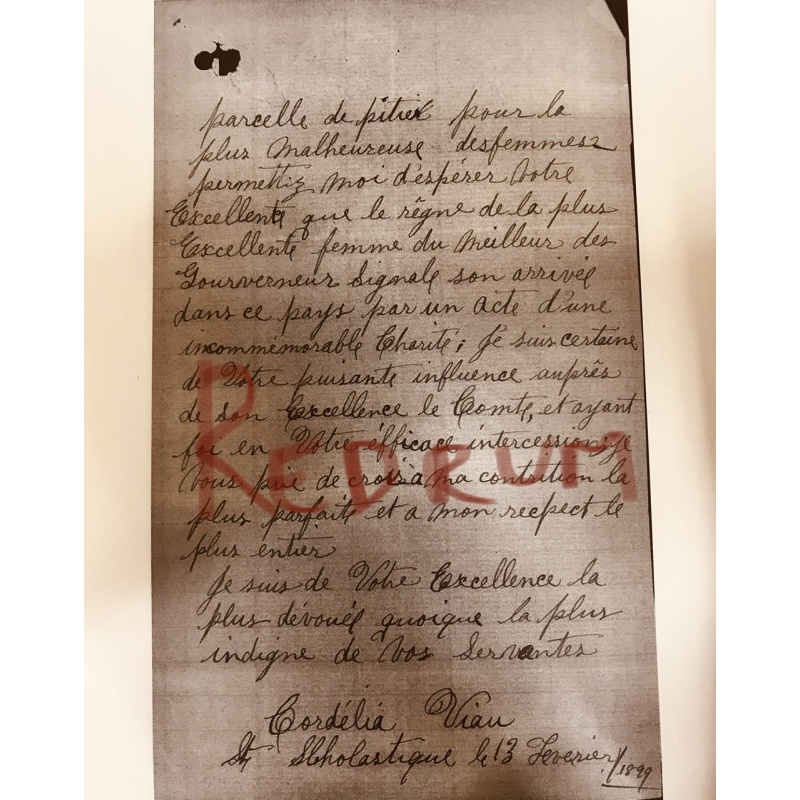Executed - Cordélia Viau letter of 3pages from 1899
Redrumautographs 775
$15.00
- Postage
-
Regular mail
$5.00 to United States
Get Additional Rates
- Select Country
- Zip/Post Code
- Quantity
Description
You will be receiving a copy of Cordélia Viau letter from 1899. She is asking for mercy and would like to be forgiven for murdering her husband Isidore Poirier with her lover.
She is imploring pardon to the Countess of Minto and is begging for her life expressing how she is very sacred to be hanged.
She will be hanged the same year with her lover and it will be a rare double hanging in 1899.
This 3 page letter will be folded and sent in a regular size envelope.
Very nice true crime collectible!
On November 22 1897, Isidore Poirier, Cordélia Viau’s husband was found killed stabbed and throat cut in his house in Saint-Canut. Cordélia and her handyman lover (Samuel Parslow) we’re accused of the murder. After two trials they were both accused and hanged of March 10 , 1899.
On March 10, 1899, in the small town of Sainte-Scholastique, Cordélia Viau was executed alongside her accomplice, Samuel Parslow, for the homicide of her husband, Isidore Poirier, in their house in Saint-Canut. In the month preceding her execution, the Viau family – her parents, three of her sisters, and a brother-in-law – set out to campaign for mercy on behalf of Cordélia. Their efforts were a strategic appeal to the wife of the Governor General, Lady Minto, documented in the archival capital case file. This unusual strategy of appealing to the wife of the Queen’s representative rather than the Governor General demonstrates an understanding of the power of the emotions shared between the women, as mothers, daughters, sisters, and wives. Unfortunately for Cordélia, the emotions they hoped to provoke, such as sympathy, pity, and piety, were not compelling enough to save her life. At the same time, the press covered the case with sensational details. Newspapers such as La Presse, La Patrie, The Montreal Daily Star, and The Gazette sought to provoke emotions in their readers by using stereotypes about women and violent crime, highlighting the shame of murder and hangings, and dissecting the actions of the crowd that gathered to witness the execution. Alongside the private and public emotions raised by the case, early abolition sentiment appeared in articles describing the execution.
Payments & Returns
- Payment Methods
- PayPal
Postage & Shipping
- Item Location
- H4K 2T2, Alabama, United States
- Ships To
- Worldwide
- Pick-ups
- No pick-ups
- Returns Accepted
- No









